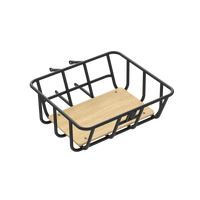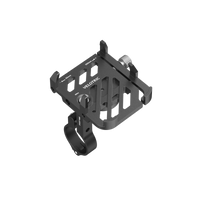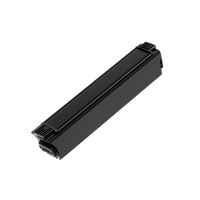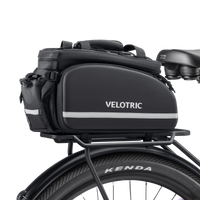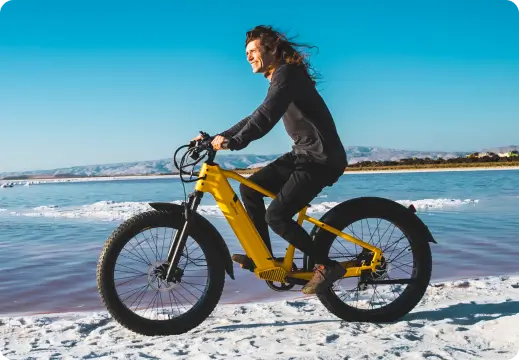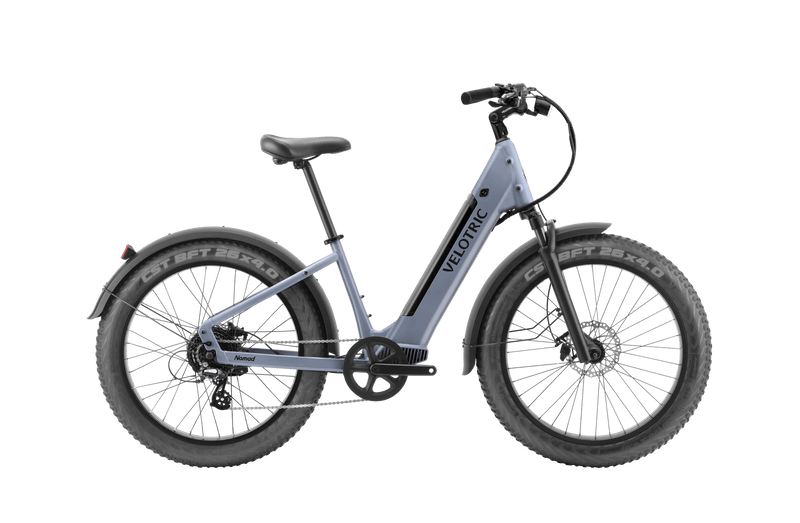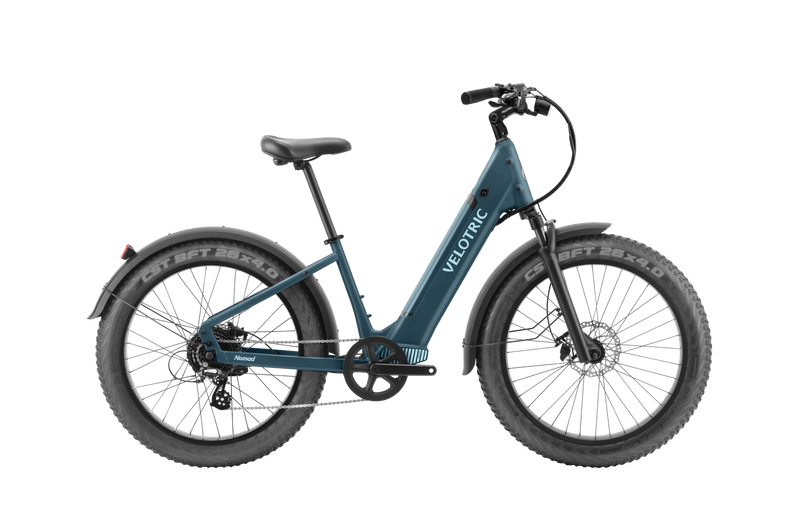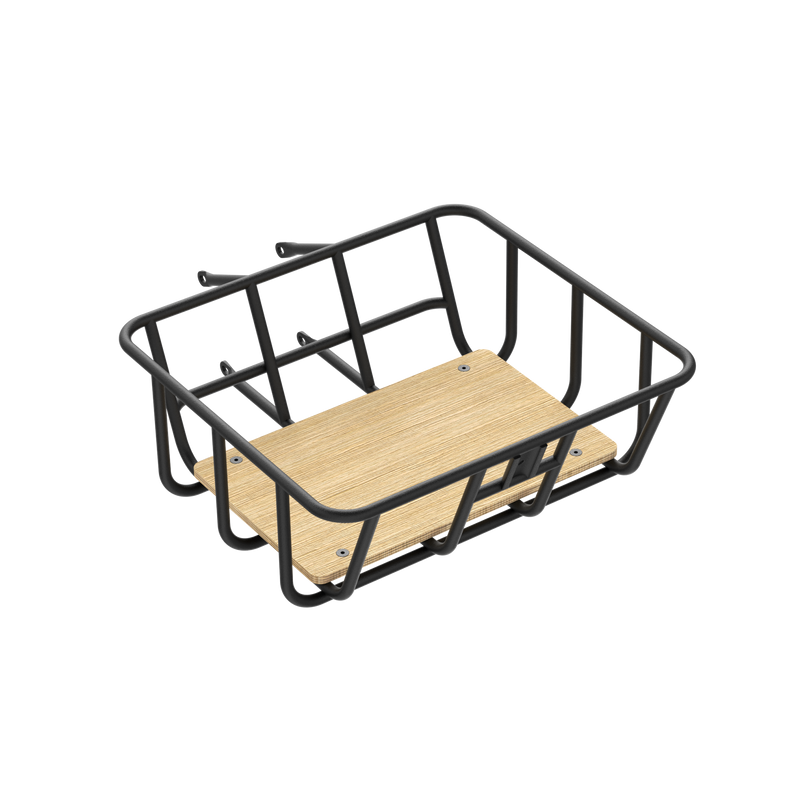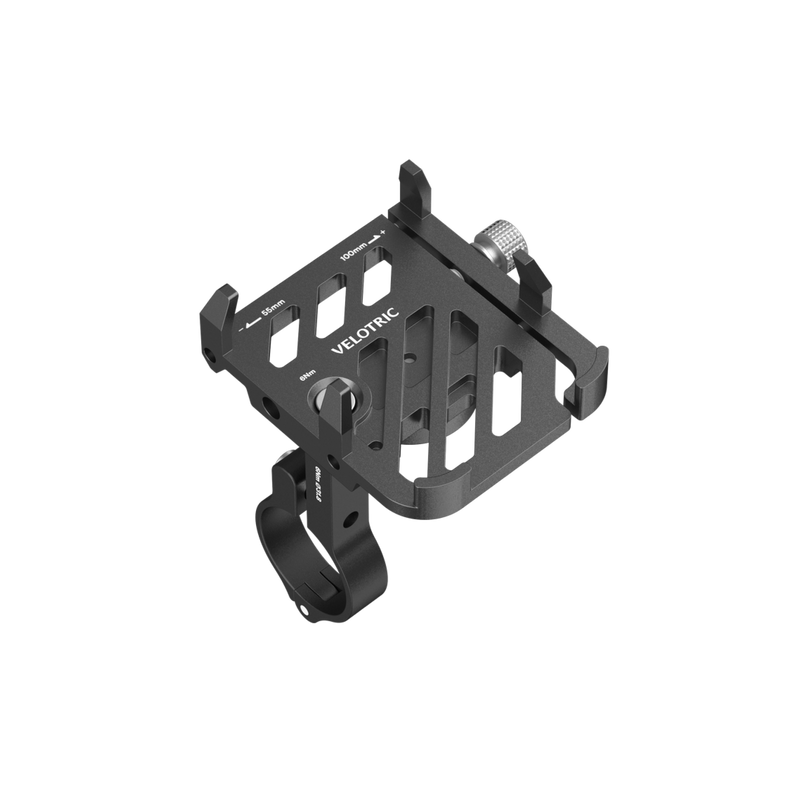If you're exploring the world of e-bikes, one of the most important components you'll encounter is the electric bicycle motor. This powerhouse determines how fast you accelerate, how well you climb hills, how long your battery lasts, and ultimately how enjoyable your ride feels. Over the years, e-bike motors have transformed from simple assist tools to highly engineered systems that deliver smooth, responsive, and energy-efficient performance.
In today’s world, where eco-friendly transportation is becoming the norm, e-bike motors play a huge role in making cycling accessible to people of all ages and fitness levels.
Below, we’ll explain how three main types of e-bike motors work: the hub motor, mid-drive motor and friction‑drive motor. We’ll also highlight the pros and cons of each motor and reveal how to choose the right motor for your needs as a cyclist.
Contents
What is an electric bicycle motor?
An electric bicycle motor is a compact machine that converts electrical energy from the battery into mechanical power to assist your pedaling. Depending on the design, the motor can power the wheel directly or enhance your pedaling force, creating a smoother and easier ride.
E-bike motors date back to the early 20th century, but they gained major popularity only in the last decade. With improvements in lithium-ion batteries, brushless motors, and compact electronics, today’s motors are more powerful, lighter, and more efficient than ever.

Modern electric bicycle motors come equipped with advanced sensors, torque measurement, and smart controllers that adjust assistance automatically based on your riding conditions. It also powers the pedal assist system (PAS), which helps move the bike forward while you’re pedaling.
Some Ebikes also have throttle assist functionality. With this, the motor moves the bike forward even when you aren’t pedaling.
Different motors accomplish this in different ways. Here’s a quick breakdown of the mechanics of the most popular types of e-bike motors
1. Hub motor (in wheel)
The hub motors sit inside the wheel hub and deliver power directly to the wheel. With this style of motor, the motor’s shaft doubles as the e-bike’s rear axle.

These are the most common and affordable type, found on the majority of budget-to-mid-range e-bikes. Next, let’s take a closer look at the different types of hub motors and what sets each one apart.
How hub e-bike motors work
Hub e-bike motors provides direct rotational force to propel the bike. When the rider begins pedaling or activates the throttle, the motor draws power from the battery and uses internal magnets and coils to create electromagnetic rotation. This rotation turns the wheel itself, giving the rider smooth, consistent assistance without relying on the bike’s chain or gears.
Hub motors in different wheels:
- Rear hub motors: The most popular standard. They provide good traction and a "push" feeling similar to a motorcycle.
- Front hub motors: Easier to install (often used in DIY kits) and provide an "All-Wheel Drive" feel since you pedal the rear while the motor pulls the front. However, they can slip on loose terrain (gravel/sand).
Internal types of hub motors:
-
Geared hub motors: These have internal planetary gears that spin the motor faster than the wheel.
- Pros: Lighter, smaller, and provide better torque for climbing hills. They have a freewheel, so there is no resistance if you pedal with the battery dead.
- Cons: Can be slightly noisier (a faint whine); nylon gears can eventually wear out.
-
Direct-drive motors (gearless motors): The motor magnets are attached directly to the hub shell.
- Pros: Near-silent, incredibly durable (no moving gears), and capable of Regenerative Braking (recharges battery when stopping).
- Cons: Large and heavy. They have "magnetic drag," meaning the bike is harder to pedal if the battery dies.
Pros and cons of hub motors
Direct-drive hub motors have a few distinct advantages. Below are some of the features that make them popular:
- Simple: Because the hub is moving to create torque, there are less intricate moving interlinked parts. This allows for a simple, straightforward design. As a bonus, these motors are very quiet when they run.
- Durable: Since they don’t have a lot of moving parts, direct-drive hub motors are easy to upkeep. They’re durable and long-lasting and don’t have the high maintenance costs of a mid-drive motor.
- Affordable: In addition to not having high maintenance costs, direct-drive hub motors are also cheaper to purchase. This makes them a more economical choice.
While direct-drive hub motors are affordable and durable, they also have drawbacks. Here are some of their cons:
- Unwieldy handling: Hub motors tend to be bulkier and weigh more than mid-drive motors. This adds to the bike’s overall weight and can make for unwieldy handling. Plus, since the motor is at the back of the bike, the weight is distributed unevenly, further affecting handling.
- Inefficient: Since the motor doesn’t have internal gears but generates torque by rotating the hub, this type of motor can’t generate as much torque. As a result, it can’t turn the e-bike’s wheels as quickly, resulting in less speed and overall inefficiency.
- Slow acceleration: The motor’s low torque and lesser speed can visibly impact the riding experience. Bike riders may notice the bike doesn’t accelerate as quickly and can also feel a slight drag when pedaling.
2. Mid-drive motor
A mid-drive electric bike motor is located in the center of the bike, between the front and rear wheels. More specifically, the motor is between the crank arms or “cranks,” the levers in the center of the bike frame that the bike’s pedals are attached to.
How mid-drive e-bike motors work
A mid-drive e-bike motor generates torque (a twisting or turning force that causes rotation) by a spinning shaft. This shaft is connected to a chainring, which is connected to the crank arms — which are connected to the pedals.
When the motor is activated, the spinning shaft creates torque. This engages the PAS and helps move the pedals.
Pros and cons of mid-drive e-bike motors
Mid-drive motors are popular among many e-bike manufacturers. Here are some advantages of mid-drive motors:
- Easy handling: Mid-drive motors are located centrally in the bike and low to the ground. This creates a low center of gravity that helps to balance the bike’s loads, adding stability and improving handling.
- Smooth ride: Mid-drive motors are efficient thanks to their central position. The motor’s central placement creates a direct link between the motor and the bike’s driving force, resulting in a smooth ride and less jerky acceleration.
- Longer range: Thanks to their efficiency, the best mid-drive electric bike motors have a long range. You’ll get more out of each battery charge. While it might not be noticeable for short rides, it can make a difference on long rides.
While mid-drive motors are efficient and create a smooth riding experience, they do have drawbacks. Here are some of their cons:
- Difficult to maintain: Mid-drive motors tend to be pricier to keep up. For example, the drivetrain (the components of the bike that power it forward) tends to wear down faster in this type of bike. Plus, if the chain connecting the cranks and pedals breaks, the PAS won’t work.
- Limited derailleur compatibility: A derailleur is a bicycle gearing system consisting of a chain, different-sized sprockets, and a mechanism that moves the chain between sprockets. Mid-drive motors aren’t compatible with a wide range of derailleurs.
- More expensive: Mid-drive motors aren’t just pricier to maintain. They also cost more to purchase upfront (compared to hub-drive motors).
3. Friction-drive motor (Niche)
A friction-drive motor is one of the earliest and most unconventional e-bike motor designs. Instead of powering the wheel from the hub or crank, this system uses a small roller that physically presses against the tire. When the motor spins the roller, the roller creates friction with the tire surface and propels the bike forward.
Although friction-drive systems are much less common in modern e-bikes, they still exist in certain niche markets and DIY setups. Their simplicity and lightweight design make them attractive to riders who want a compact motor that can be added or removed easily.
How friction-drive e-bike motors work
A friction-drive e-bike motor works by pressing a small, powered roller directly against the bicycle tire. When the motor spins the roller, the roller’s surface creates friction with the tire tread, which in turn rotates the wheel and propels the bike forward.
Unlike hub or mid-drive systems, friction-drive motors don’t connect to the bike’s drivetrain or wheels internally—they rely entirely on surface contact between the roller and tire.
Pros and cons of friction-drive e-bike motors
Here are some of the perks of friction-drive e-bike motors:
-
Lightweight and ultra-Compact: Friction-drive motors are some of the smallest and lightest systems on the market. Many weigh only 3–5 lbs, making them ideal for riders who want minimal added bulk.
-
Simple installation (great for DIY): They mount directly onto the frame or seatpost and don’t require changing wheels, hubs, or drivetrain parts. This makes them one of the easiest motors to add to a regular bicycle.
-
Removable and portable: Many friction-drive kits can be taken on and off in seconds.
While friction-drive motors are affordable and create an easy riding experience, they aren’t perfect. Here are some of their cons:
-
Less efficient: Because power transfers through surface friction, energy loss is higher. This results in shorter range or lower power output.
-
Poor performance in wet or muddy conditions: Water, dirt, or debris on the tire reduces traction. The roller can slip, leading to inconsistent power and reduced climbing ability.
-
Noise: Compared with hub or mid-drive motors, friction-drive units can be louder because the roller and tire create mechanical contact noise.
Mid-drive vs. hub e-bike motors: Which is better?
Now it’s time for the great debate: mid-drive versus hub motors. Each approach has trade-offs. Which is better depends heavily on what kind of riding you do, your priorities (cost, maintenance, hill climbing, comfort, etc.), and terrain.
Tradeoffs and what you lose (or gain)
| Consideration | Mid-Drive Downsides | Hub-Drive Downsides |
|---|---|---|
| Cost and Complexity | Typically more expensive; more complex installation/maintenance. | Simpler and cheaper, but sacrifices torque/efficiency on hills. |
| Drivetrain wear | Puts more stress on chain/gears (especially with lots of torque / load), may require upkeep. | Drivetrain largely unaffected by motor — lower wear. |
| Performance on hills/terrain | Still needs chain/gears, but handles hills better overall | With no gear leverage, may struggle on steep hills or require much more power. |
| Ride feel / handling | More balanced handling, closer to traditional bike feel — but heavier central motor can add overall weight. | Simpler feel, but wheel-motor weight can affect balance; ride may feel less natural. |
| Maintenance & reliability | More moving parts → potentially higher maintenance; chain/gear wear | Simpler internals → generally more robust and lower maintenance |
Mid-drive motors are generally considered mechanically superior, as they are the most efficient, offer a smoother ride, and promote easy handling. However, that efficiency comes with a price. Mid-drive motors are mechanically complex, which means they generally require more maintenance. Plus, they’re more expensive to buy.
| Use Case / Rider Type | Recommended Motor Type |
|---|---|
| Urban commuting, flat terrain, budget-conscious, minimal maintenance | Hub-drive |
| Mixed terrain, hills, carrying cargo, long-distance riding, off-road or mountain biking | Mid-drive |
| Riders wanting throttle for ease (less pedaling) / simpler, straightforward assist | Hub-drive |
| Riders wanting natural bike feel + efficient power delivery + good handling | Mid-drive |
Cyclists who want a bike for everyday purposes like commuting to work or getting some exercise may want to skip the hassle and expense associated with a mid-drive motor and opt for a hub motor instead.
A high-quality hub motor can be more affordable, simple, and durable. You won’t have to stress about upkeep as much as with a hub motor.
Finally, note that the type of motor is just one consideration when choosing an e-bike. You’ll also want to consider details like motor power (wattage) and range (how long the bike can go without needing to recharge). For example, a 500W motor is plenty for a road bike. But an electric mountain bike (MTB) motor may need more power to go up steep inclines.
Beyond the motor, there are other aspects to consider too — like the bike frame type. Plus, once you get the bike, you’ll have to make sure it fits properly by adjusting details like the seat post and handlebar height.
Our point is this: Picking the right electric vehicle requires more than simply choosing the right motor! When you drive Ebikes, you want to be comfortable, so doing research to pick the right bike is important.
Discover the best Velotric e-bike options for you
After understanding the differences between these motor types, you can now choose the one that best fits your e-bike needs. Here are Velotric’s recommended e-bikes for different riding scenarios.
Commuting in everyday use
Velotric Discover 2 - Premium commuter and everyday Ebike
The Velotric Discover 2 is built to deliver a smoother, safer, and more personalized ride for everyday city living. It is equipped with a 705.6 Wh high-capacity battery, giving you up to 75 miles of max range on a single charge. Whether you’re commuting multiple days a week or running errands across town, you get the confidence of all-day riding without constant recharging.

Learn more about Velotric Discover 2
Velotric Nomad 2X — Full-suspension fat-tire all-terrain beast
The Velotric Nomad 2X is built for riders who want maximum capability, comfort, and power across every type of terrain. At the heart of the Nomad 2X is a high-performance 750W motor capable of delivering an enormous 105 Nm of torque and 1400W peak output.

Its long-lasting battery delivers up to 75 miles max range, giving you the freedom to take on long adventures without range anxiety. It’s perfect for all-day excursions, extended backroad exploring, or mixed-terrain commuting. Nomad 2X features SensorSwap™, allowing you to switch between:
- Torque sensor mode for a smooth, responsive, natural ride
- Cadence sensor mode for an easy, boosted feel with minimal effort
This flexibility lets you adapt the bike to different trails, ride conditions, or personal preferences.
Learn more about Velotric Nomad 2X
Understanding the differences between motors is one of the most important steps in choosing the right ebike. Each motor type delivers a unique riding experience—whether you want smooth, effortless city cruising, or lightweight assist for casual routes. By matching the motor style to your terrain, riding habits, and comfort preferences, you’ll end up with an e-bike that feels truly built for you.
But the motor is only one piece of the puzzle. Your overall experience also depends on the frame style you choose, from step-through comfort frames to rugged all-terrain builds. Still unsure which setup is right for you? Nothing beats experiencing the ride firsthand. Schedule a test ride today and feel the difference for yourself.























